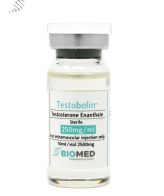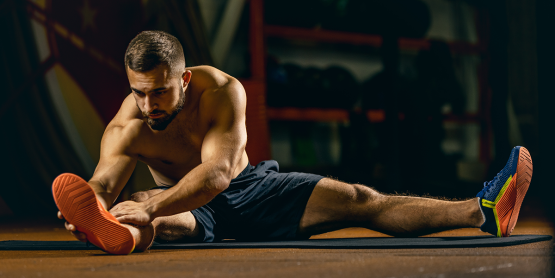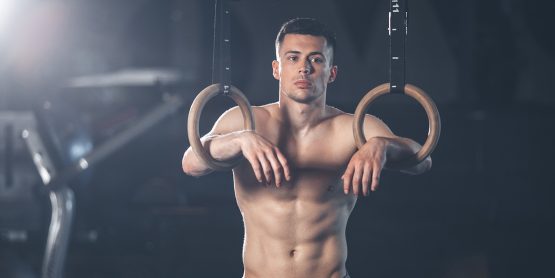
Building muscle mass and packing on size is not only about working harder than last time — it’s about working smarter than last time. Muscle growth is a complex science in itself. To optimize it, there are lots of variables that need to be perfected; one of which is programming & training frequency. When working out in the gym, your body’s muscle fibres are constantly being torn down and damaged from all the mechanical tension going on. In order to build back stronger and larger, they need to repair and recover. To help that, take a look at one of this month’s bestsellers: Test E! Anabolics like Test Enanthate (and it’s siblings Testosterone Propionate & Testosterone Cypionate) do an amazing job at boosting recovery and can help you with your workout performance & your Autumn bulk. Today, we are going to go over how long it takes muscles to recover, weekly training frequency for maximum gains, and more.
 How Long Does It Take For Muscles To Recover?
How Long Does It Take For Muscles To Recover?
Well, short & simple: it’s different for each muscle, and varies between people. Broadly speaking, muscles usually need 1-3 days between training sessions to recover. However in most cases, smaller muscles (like arms, shoulders, calves, abs, traps and forearms) usually recover faster than the bigger muscles (like chest, back, quads, hamstrings, and glutes) do; therefore if lacking, you can increase frequency for those muscle groups. For a general basis, you can expect that most muscle growth & the best muscle recovery will occur, if you train each muscle 2-3x per week. Although if you want quicker recovery, you should check out some of our anabolic steroids (such as TNT 450, MK-677, and Sustanon) — these will allow your muscles to recover & grow more efficiently for greater gains! For muscles like chest, back, and legs though, you may still only want to train these twice a week as they take longer to recover.
How Should I Program My Training & Frequency?
As we know, training each muscle group 2-3x a week is optimal for muscle gain. The question is: how do we program that into our schedule? Here are a few simple, yet extremely effective training splits (that we’ve arranged from least to most frequency) that can elicit major gains! For some extra help, we’ve included some pros and cons of each to help you pick which once suits your goals best.
- Full Body
Full body programming is exactly how it sounds: each workout, you’ll be training your whole body (generally with broad & compound exercises like deadlifts, squats, bench press, and bent over rows) at once! Usually with full body programming, you’ll only be in the gym 3-4 times per week. Frequency is great with full body, however it is lacking in muscle specificity and hypertrophy, since volume can be low & in order to hit every muscle in your body in only one workout, you’d have to be in the gym for over 3 hours (and training efficiency would be garbage at that point)! Strength gains on full body are unreal, and can be even more absurd if you take Masteron or Deca Durabolin. For beginners, full body is a great choice in order to build a base and train the fundamentals — though for intermediate and advanced trainees, some of our latter options are perhaps more beneficial.
- Upper/Lower
Upper/Lower programming is great for gym goers of all training experience levels! You’ll usually train 4-6x per week on this training split, while alternating between upper body workouts and lower body workouts each session. For a quick example, in upper body workouts you’ll hit all your upper body muscles with 80% compound work and 20% accessory work, and lower body muscles in lower body workouts! Lots of powerlifters & strength athletes also train Upper/Lower like bodybuilders do, since muscle & joint recovery is easy with the split. Frequency is great with Upper/Lower because all your muscles are sure to be hit a minimum of 2x per week, with the option of 3x per week if you’re feeling ready & recovered. However, training may not be specific enough for all individuals. For this reason, we’re going to list one more popular and valuable training split to know of.
- Pushing muscles include the chest, triceps, front/side delts.
- Pulling muscles include your back, biceps, forearms, rear delts, and traps.
- Leg muscles include your quads, hamstrings, glutes, calves, (and sometimes lower back/abs are included)
This program is great for training frequency, muscle specificity, and hypertrophy, but it can be a bit hard on a beginner’s recovery. For better gains on LPP, try out one of our products that have been proven to work incredibly well with high frequency training: Dianabol. Pursuing the LPP split means you’ll be working out 6x per week, with only one rest day, in order to activate & fatigue each muscle group 2x per week. For intermediate and advanced lifters, this program is a great route to take.
Our Final Take
Today, we’ve learned that training your muscles 2-3x per week is best for maximum muscle gains and hopefully you can take a stab at one of the 3 training splits we’ve explained to you. All of these are great for recovery and development, so don’t be afraid to give one a shot! While you’re at it, make sure to scroll through & shop our catalog of anabolic steroids to guarantee unbelievable muscle gains! Find out our top 3 anabolics for Fall 2021 here. Until next time, do continue training hard, learning new info & tips, and shopping for Biomed products!






